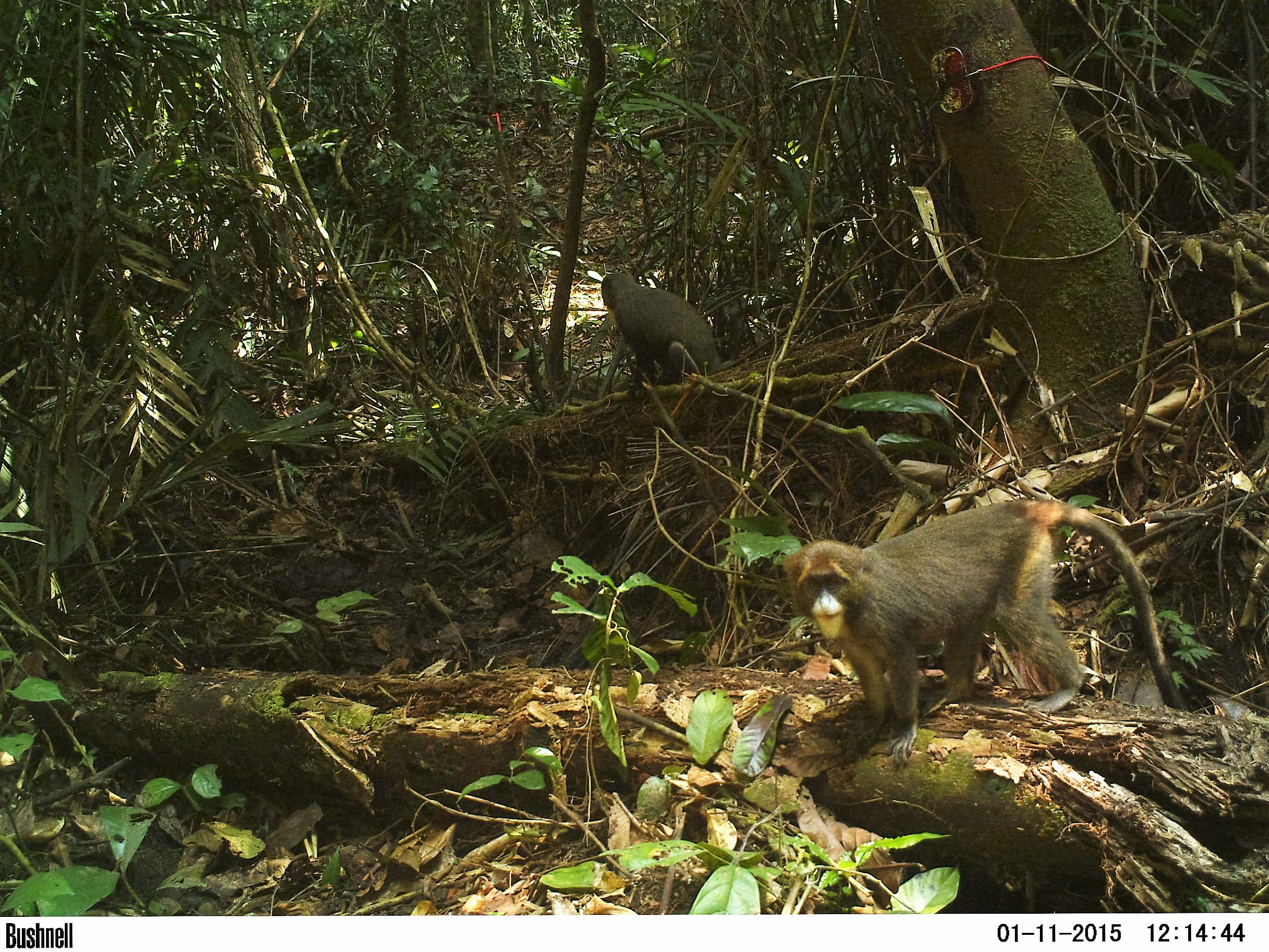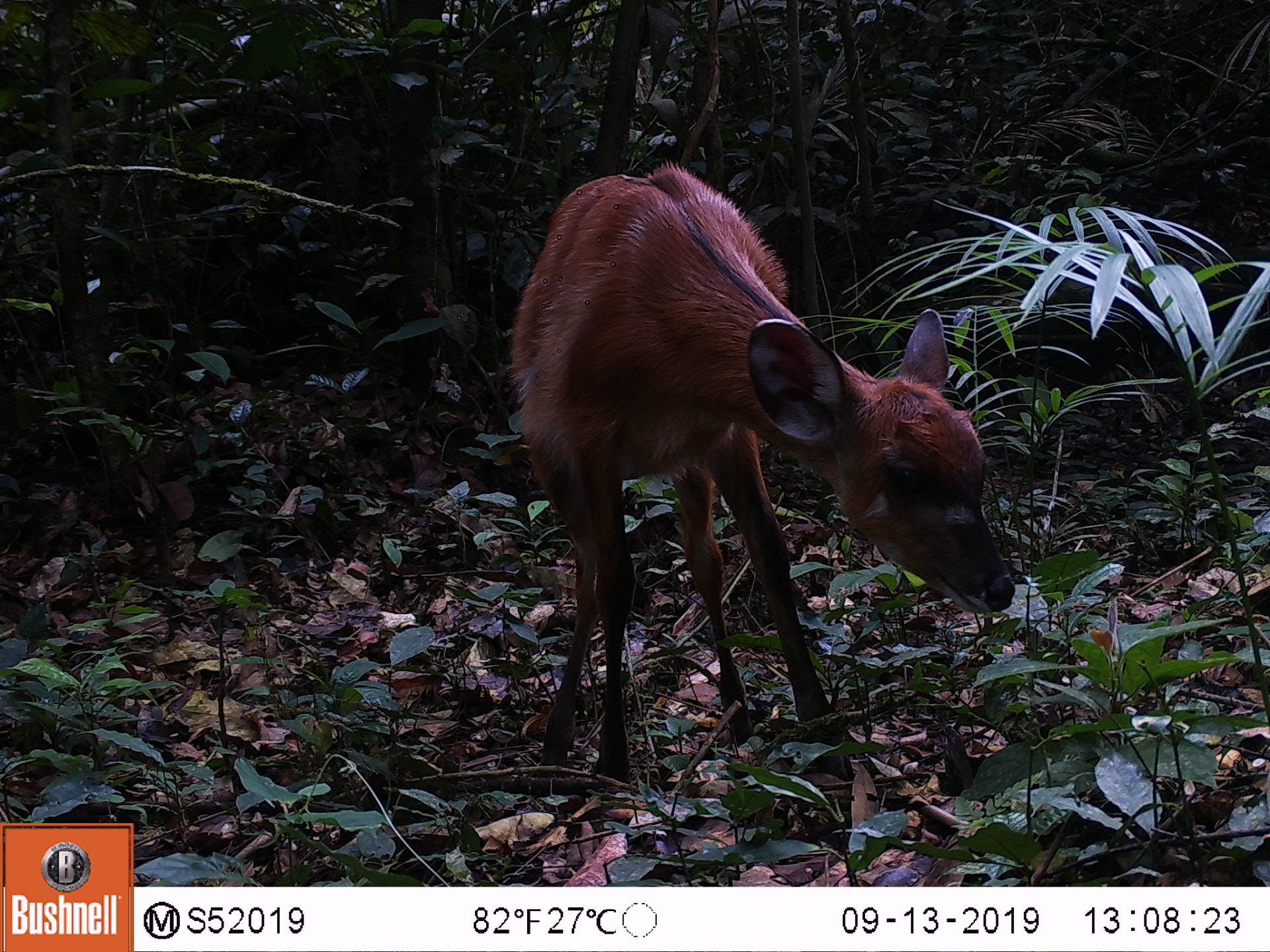Camera traps, remotely-activated devices that capture images or video when a motion and/or heat sensor is triggered, have become invaluable in wildlife monitoring projects worldwide. Further, surveying with camera traps is an established method for effective, non-invasive biodiversity monitoring, and is especially useful in recording elusive species like many of those found in mainland Equatorial Guinea.
Biodiversity Initiative is using camera trapping to:
- Assess community biodiversity and ecology of threatened species
- Keep common species common
- Inform effective conservation management in Equatorial Guinea

Assess community biodiversity and ecology of threatened species:
The wildlife populations of Equatorial Guinea are at a tipping point where they may be lost before being understood by science. The wildlife surveys that have been conducted are few and far between, resulting in a lack of basic ecological data on mammal species in mainland Equatorial Guinea.
Biodiversity Initiative has been conducting biodiversity surveys in the village of Oyala in central Equatorial Guinea since 2015. We are using photographic data collected from camera traps to identify biodiversity hotspots and populations of vulnerable wildlife such as chimpanzees, gorillas, elephants, and pangolins.
Camera traps are an integral tool to track and record where mammal species currently occur and which species occur together. By establishing a benchmark, we can track changes in mammal ranges and composition of communities, helping to ensure that both the broad community biodiversity, and the ecology of threatened species, are understood. This allows us to research rare species in a habitat where little is known about their ecology, and to inform effective conservation management practices.
Keep common species common:
Threatened and endangered wildlife are often the focus of conservation in Central Africa. Yet common species such as duiker, a small forest-dwelling antelope found throughout sub-Saharan Africa, are important as well because they are a source of food for local communities. Biodiversity Initiative is developing projects to collect life history information on common species like duiker. Collecting this information helps to identify source populations that are integral to supplying bushmeat markets and to determine the sustainability of local practices.

Inform conservation management:
Biodiversity Initiative is using camera trap data to help inform local management practices in Equatorial Guinea. Specifically, we are creating maps identifying areas of biological significance in Protected Areas, characterized by rich biodiversity and species of conservation concern, that may be vulnerable to illegal activities.
This data will help the local forestry department INDEFOR-AP protect the most valuable habitats and wildlife communities from poaching and illegal logging by scheduling the most efficient deployments where they are needed most.
